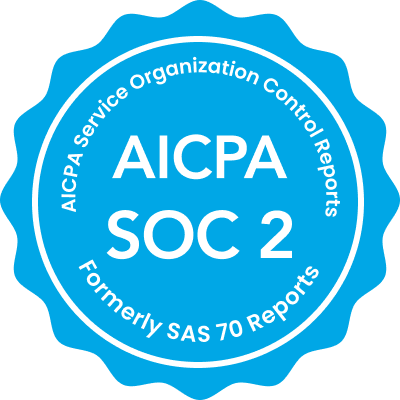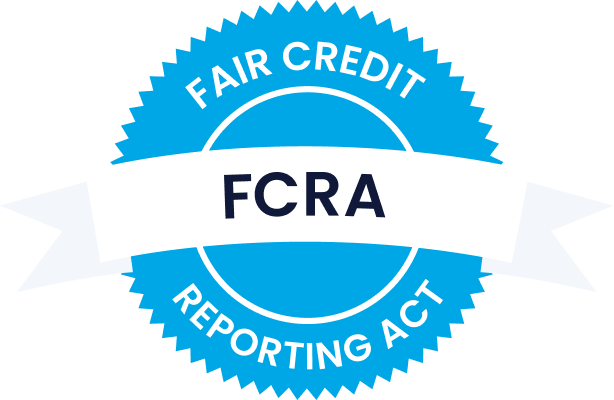Managing properties takes organization, tact, and understanding of the rules, regulations, and protocols you must follow, from vetting the potential renter to the final move-out inspection.
Learn how to properly manage a residential property with these essential Texas rental agreements and documents every landlord needs.
What is a rental application?
A residential rental application is the first step to vetting an applicant. The application precedes the lease contract and is valuable for collecting information from credit reporting agencies and verifying the applicant’s identity. It’s also an essential form for gathering relevant information that will help inform the landlord on whether the applicant will be a good tenant.
A tenant screening report will verify employment, income sources, credit history, and rental history. Here’s what a sample tenant screening report looks like.
Some of the items a landlord can ask an applicant for during the application process include:
When do you need a holding agreement?
While a holding agreement is not typically standard, a landlord can request one from a tenant if the market is unusually competitive. The holding deposit is a financial pledge that the tenant will rent the rental unit, and unlike a security deposit, it is non-refundable. Here’s a holding deposit agreement template you can use for your renter.
What does the residential lease agreement include?
The lease agreement is your rental contract with the tenant. As a landlord, it’s your job to get everything in writing so that you and the tenant remain on the same page from start to finish of the rental contract.
The lease agreement should include the following information:
- The rental property’s address
- The lease term or rental period
- The amount of the rental payments and security deposit
- The due date of the monthly rent
- The late fees on monthly rent
- The grace period for late rent payments
- Pet rent or deposit, if applicable
- Clarification on who is responsible for repairs and maintenance tasks
- Designated parking spaces
- Notifications on lead-based paint
Conducting an inspection on a rental property
For a smooth and successful move-in, landlords should ensure the home or unit is clean and everything works properly. If the previous tenant caused any damages or normal wear, including scuffed walls or dingy carpet, it is your responsibility to freshen up the rental for the incoming tenant.
Once the prospective tenant is approved, the tenant and landlord will do a move-in inspection together. The inspection helps document any minor damage to the property before the tenant moves in to avoid any disputes if the landlord needs to deduct funds from the security deposit.
When the tenant is ready to move out, the landlord and tenant will conduct a final move-out inspection. If there are no damages beyond normal wear, and there is no unpaid rent remaining, the tenant should receive their full security deposit.
The security deposit is a legal contract binding the landlord to refund the tenant. In some cases, the landlord may deduct funds for cleaning or patching nail holes or property removal if the tenant leaves personal belongings behind. The initial security deposit and pet deposit are to ensure there are funds to cover property damage caused by the tenant or tenant’s pet. In the spirit of clear communication, the landlord should provide an itemized list of charges deducted from the tenant’s deposit or pet deposit if there are any deductions for damage or necessary maintenance.
Raising rent in Texas
Ensuring every document is painstakingly in order will help streamline the rental process. When the lease is renewed in the residential contract, there is no rent increase limit according to Texas state law.
There is no rent control law in Texas. Landlords do not have stipulations on giving proper notice for rent increases once the lease is ready to be renewed. However, to remain on good terms with the tenant and as a courtesy, the landlord should give a 30-day notice in writing whether the lease is fixed or is a month-to-month lease. Being transparent and communicating clearly will help influence your trust with tenants and build a good landlord-tenant relationship.
Texas rental agreements and documents every landlord needs
If you have good tenants who pay rent on time, take care of the property, and are considerate to their neighbors, one of your goals should be to retain these tenants. As we previously covered, Texas has no law on rent increases or official requirements for landlords to give notices. By issuing a written notice, you can spare yourself any disputes and avoid falling out of a quality tenant’s good graces. A little consideration will go a long way.
As a landlord, you’re responsible for making sure the rental unit is in a habitable condition. When a tenant reports a leak or a faulty appliance, the landlord must arrange for repairs within a reasonable time frame.
Whenever you must enter the premises of the rental, you are required to give your tenant 24-hour written notice that you or a service provider intends to visit the property.
The eviction process in Texas
According to the Texas Tribune, there were 37,000 evictions in Houston, Fort Worth, and Dallas collectively in the first quarter of 2022. Eviction is rare in some of the biggest cities in Texas and should be the last resort. The lease agreement is a legal contract, and if tenants are violating the lease terms or are not paying their rent, the landlord has the right to begin the eviction process if it comes to these last-resort circumstances.
There is an eviction process in Texas that every landlord should abide by, which includes the following steps:
- The landlord must give at least a 3-day written notice to evacuate; sometimes, a 30-day notice may be mandatory.
- After the judgment has been issued, the landlord has to wait five days before taking any action.
- After the final judgment, the landlord can request a writ of possession to remove the tenant’s property.
In Texas, you are not allowed to retaliate against the tenant for something they did that you don’t like if it does not violate the lease terms.
What is considered retaliation?
Suppose your tenant asks for excessive repairs. You cannot evict them, increase their rent, or deprive them of the usual services for making a repair request. The tenant is protected by the Texas Property Code 92.331 for six months after making a repair request.
Ending a tenancy doesn’t have to be tricky. If you have concrete grounds for eviction, you can start the proceedings.
Lease termination, lease violations, and ending the lease early
Everything should be in writing. When the time comes to renew the lease, email your tenant in advance to ask them if they plan on renewing their lease. Doing this will help you adequately prepare if the tenant opts out of renewing.
If your tenant asks to end a lease early, you can ask them to stay and continue paying rent until you find a new tenant or charge them a penalty fee if you include an early termination clause in the lease terms. If the tenants are victims of family violence, they qualify for early lease termination. In Texas, military deployment allows service members to give a notice of termination to the landlord and break the lease early.
FAQ: Essential Texas rental documents
Landlords in Texas must ensure that the rental is habitable and that all damages are repaired before the tenant moves into the property. When screening the tenant, the landlord must provide a rental application and consent form before obtaining credit reports from the tenant.
The following Texas rental agreements and documents every landlord needs at the ready for screening, approving, and managing all operations of the rental process include:
- Rental application
- Lease agreement
- Move-in inspection form
- Holding deposit agreement
- Notice of intent to enter
The residential lease agreement should include the rental term or lease term, monthly rent payment, due date, the grace period for unpaid rent, the landlord and tenant maintenance responsibilities, and lease agreement disclosures, including lead-based paint hazards that may pose health risks.
The move-in inspection will help the property owner determine who is responsible for liability of damages at the end of a lease period.
A holding deposit agreement benefits landlords and tenants in a competitive rental market. The tenant secures the rental with a holding deposit.
The notice to enter is intended to give tenants reasonable notice that the landlord or a repair person will enter the rental premises. The only exception for a landlord entering a rental property without notice is when a natural disaster has created dangerous conditions for the renter and the home, or if there is an emergency.
A landlord must give the tenant at least a three-day notice to vacate. The tenant can remain in the rental until the landlord has issued a writ of possession.
If the lease period is nearing, and the landlord wants to end the tenancy, they should give the tenant advance notice.
Our final thoughts
When it comes to vetting potential tenants, remove the guesswork by enlisting a tenant screening service like SingleKey. SingleKey provides a fool-proof, accurate Tenant Report that will help filter through tenants with a record of late payments and poor financial history to help you find ideal renters.
This blog post is intended for general informational purposes only and is subject to change. It is not intended as legal advice. Consult your local laws and seek professional legal counsel before making any decision or taking any action based on this post.





